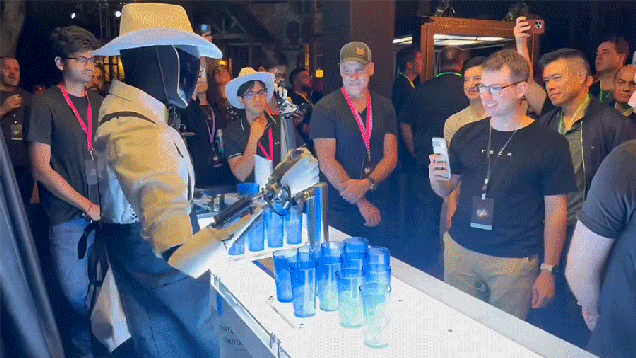Tesla’s Recent Autonomy Event: Innovations and Implications for the Future of Transportation
The recent autonomy event hosted by Tesla showcased the company’s ambitious vision for the future of transportation, focusing on two standout projects: the two-seat Cybercab and the art deco city bus known as the Robovan. While these vehicles are generating buzz, the event also highlighted updates to Tesla’s Optimus robot, which aims to revolutionize not just transportation but various sectors of the economy. This article delves into the key takeaways from the event, exploring the implications of these innovations and what they mean for consumers and the industry at large.
Understanding the Cybercab: A Glimpse into the Future of Urban Mobility
The Cybercab represents Tesla’s foray into the realm of autonomous ride-sharing. Designed with a sleek, futuristic aesthetic, this two-seat vehicle is not just about looks; it embodies a vision of efficient urban mobility. With cities grappling with congestion and pollution, the Cybercab could serve as a solution by reducing the number of cars on the road.
Recent studies suggest that ride-sharing services can decrease urban traffic by up to 15%, a significant figure considering the increasing population density in metropolitan areas. Tesla’s Cybercab aims to capitalize on this trend, offering a compact, electric solution that could integrate seamlessly into existing ride-sharing platforms. Moreover, its autonomous capabilities could enhance safety and convenience, making it an attractive option for urban dwellers.
The Robovan: Rethinking Public Transport
In contrast to the Cybercab, the Robovan is designed to address the needs of public transportation. With its art deco design, it aims to provide a more appealing alternative to traditional buses, potentially attracting riders who might otherwise opt for personal vehicles. The Robovan’s autonomous features could streamline operations, reducing wait times and increasing efficiency.
According to a report from the American Public Transportation Association, public transit can reduce individual carbon footprints by up to 45%. By introducing a modern, autonomous option like the Robovan, Tesla could play a pivotal role in promoting sustainable urban transport solutions. This initiative aligns with global efforts to combat climate change, making it a timely and necessary innovation.
Optimus: The Future of Robotics and Automation
While the vehicles stole the spotlight, updates to Tesla’s Optimus robot also warrant attention. Despite criticisms regarding its current capabilities, Elon Musk envisions Optimus as a transformative force in various industries. The idea of a robot that can perform tasks ranging from manufacturing to service roles could lead to significant productivity gains.
Experts in robotics suggest that automation could increase productivity by as much as 30% in certain sectors. If Tesla can refine Optimus to meet these expectations, it could not only bolster the company’s bottom line but also reshape labor markets. However, this raises important questions about job displacement and the need for reskilling workers in an increasingly automated economy.
The Afterparty: A Celebration of Innovation
The event’s afterparty further emphasized Tesla’s commitment to innovation, featuring a demonstration of the Optimus robot serving drinks. This playful yet practical application of robotics showcases the potential for automation in everyday tasks, hinting at a future where such technology becomes commonplace in our lives.
As Tesla continues to push the boundaries of what’s possible, the implications of these innovations extend beyond the automotive industry. They challenge traditional notions of transportation, public services, and labor, prompting a reevaluation of how we approach urban living and economic productivity.
Navigating the Future: What Lies Ahead for Tesla and Consumers
As Tesla rolls out these ambitious projects, consumers and industry stakeholders must consider the broader implications. Will the Cybercab and Robovan become staples of urban life? How will the rise of automation affect job markets and economic structures? These questions are critical as we move toward a future where technology plays an increasingly central role in our daily lives.
In conclusion, Tesla’s recent autonomy event has set the stage for a transformative era in transportation and robotics. By focusing on innovative solutions like the Cybercab and Robovan, alongside advancements in automation with Optimus, Tesla is not just shaping its future but potentially redefining the landscape of urban mobility and labor. As these technologies develop, they will undoubtedly influence how we live, work, and interact with our environment.

